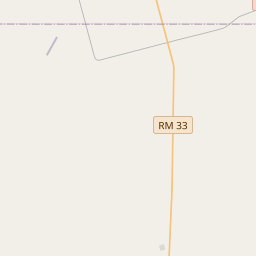First Commercial Oil Well in Howard County
Historical marker location:






On Nov. 9, 1925, this wildcat well "No. 1 H.R. Clay" drilled by Fred Hyer, began pumping oil in a venture that hinted at vast oil resources in West Texas.
The well on Clay's land hit pay dirt at 1,508 feet. Soon oil land speculators developed a great interest in this formerly "worthless" territory and other wildcatters flocked to the area.
As a result of efforts here, the Permian Basin--one of the richest oil repositories in the state--was developed. Since 1925 Howard County has produced more than 300 million barrels
As one of the most visible programs of the Texas Historical Commission (THC), historical markers commemorate diverse topics in Texas history, including: the history and architecture of houses, commercial and public buildings, religious congregations, and military sites; events that changed the course of local and state history; and individuals who have made lasting contributions to the state, community organizations, and businesses.
The cattle industry played a significant role in the development of Texas, with cowboys driving cattle from Texas to railheads in Kansas during the late 1800s and early 1900s.
During the late 19th and early 20th centuries, Howard County experienced a surge in population and development. Railroads played a crucial role in this growth, with several lines passing through the county, including the Texas and Pacific Railroad. These railroads not only brought people and goods to the area but also opened up opportunities for economic expansion, especially in agriculture and ranching.
The county's economy primarily relied on cotton during this period, with a significant number of cotton farms operating in Howard County. However, the agricultural sector faced several challenges, such as droughts and the Great Depression, which led to a decline in cotton production and a subsequent shift towards other types of farming.
In more recent years, Howard County has seen further diversification of its economy. The discovery of oil and gas reserves in the area led to an influx of energy companies, which provided jobs and contributed to the county's economic growth. Today, Howard County remains an important center for oil and gas production in Texas, while also cultivating a growing healthcare and tourism industry.
Howard County Timeline
This timeline provides a glimpse into the major events and milestones that have shaped the history of Howard County, Texas.
- 1876 - Howard County is officially organized and named after Volney E. Howard, a Texas congressman.
- 1877 - The first post office is established in the county.
- 1890 - The population of Howard County reaches 862 residents.
- 1907 - The Kansas City, Mexico and Orient Railway is completed, passing through Howard County.
- 1927 - Howard County experiences a major oil boom, leading to increased economic growth.
- 1942 - Big Spring Army Air Force Bombardier School is established in Howard County during World War II.
- 1953 - The construction of the Big Spring Airpark begins.
- 1960 - The population of Howard County reaches its peak at around 35,000 residents.
- 1980 - Howard County experiences another significant oil boom, contributing to economic prosperity.
- 1998 - A tornado strikes Howard County, causing severe damage to homes and infrastructure.
- 2010 - The population of Howard County stands at approximately 35,000 residents.